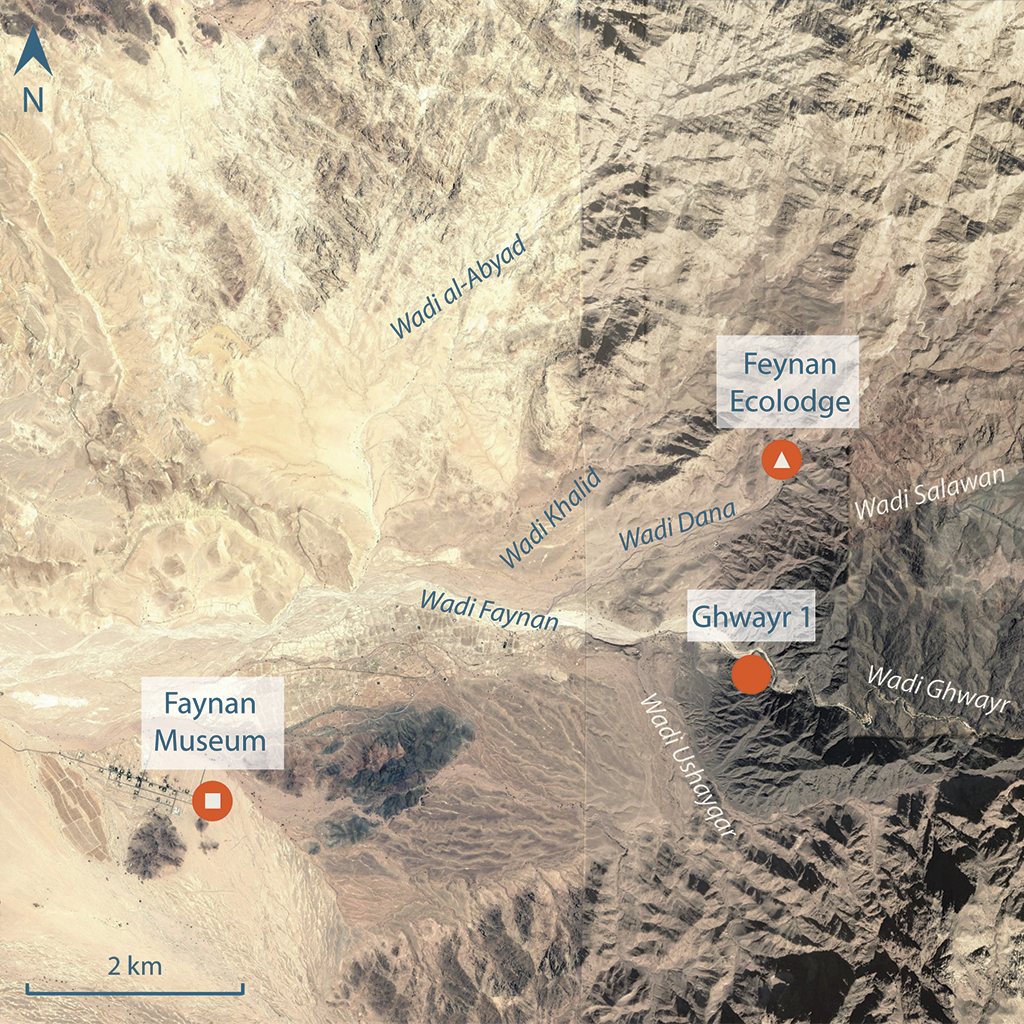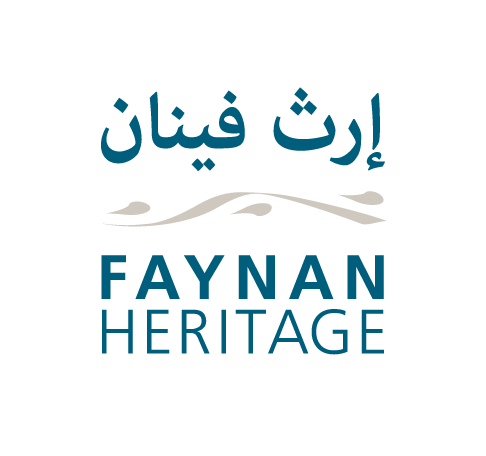Ghwayr 1
A Pre-pottery Neolithic B settlement
Mohammad Najjar, with Bill Finlayson, talking about the Neolithic site of Ghwayr 1.
Located just 500 metres from WF16, Ghwayr 1 represents the next stage in the development of the Neolithic, occupied for about 500 years around 9,000 years ago. A number of important changes took place during this time, including a new reliance on domesticated plants, the introduction of domestic animals, new ways of structuring society, and the ownership of property.
Like the earlier settlement of WF16, Ghwayr 1 is made up of a dense cluster of structures. Unlike WF16, however, all structures at Ghwayr 1 were built above ground from stone cobbles and boulders. The style developed from sub-rectangular buildings placed together in a honeycomb, into regular, rectangular structures; this reflects changes in architecture
found throughout the Levant which mark the Pre‑Pottery Neolithic B phase.
The scale of the settlement suggests that several hundred people had lived at Ghwayr 1. The rectangular buildings were large 10x10m spaces, which were later divided into smaller rooms, with stairs up to an additional storey. These small rooms were probably used for the storage of private property held inside the house, in contrast to earlier public storage structures, suggesting that the household had become an important economic and social unit. Blocks of houses were divided by a stepped street, indicating a considerable degree of communal planning and labour. The walls were plastered, some being decorated with geometric designs.
The people living in Ghwayr 1 had begun to keep domesticated animals. These were predominately goats, although sheep may have also been kept. Nevertheless, hunted animals remained an important part of their diet. A wide range of cereals and legumes were grown including barley, wheat, and peas, while figs, pistachios, capers and date palms were collected. Querns were a newly developed device for cereal grinding. The large number of querns that was recovered during excavation shows that the preparation of plant foods had become a huge undertaking at Ghwayr 1. Flint tools were also found in abundance, including blades used in sickles to harvest the newly domesticated cereals, and a range of arrowheads indicating that hunting continued to be important. The production of flint blades had become more standardised than at the earlier WF16 site, suggesting the emergence of craft specialisation.
Ghwayr 1 is located at the junction between the escarpment leading to the plateau to the east, and Wadi Faynan to the west. This was, and remains, a key communication route between the plateau and the Wadi Araba.

Location of Ghwayr 1

The walls of Ghwayr 1, looking west towards the Khirbat Faynan
